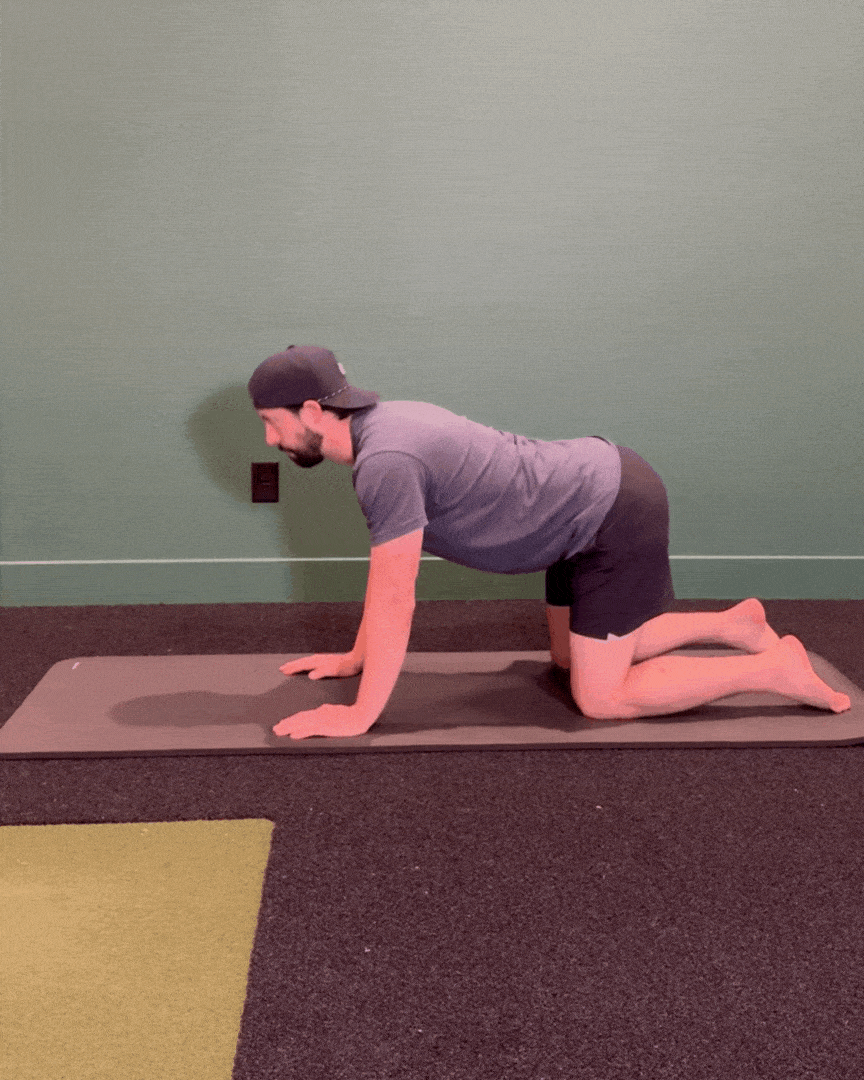- Move More Minute
- Posts
- How I Help My Patients With Facet Pain
How I Help My Patients With Facet Pain
How I Help My Patients With Facet Pain

Read Time: ~2 minutes
Time To Perform Exercises: ~5 minutes
Hey there!
A patient recently came in with back pain that got worse when he stood too long or laid face down.
He thought it was a disc problem — but the real issue was his facet joints, the small joints along the back of the spine.
This is actually one of the most common issues I see with my patients. Once we focused on moving the right areas and unloading those joints, his pain eased within days.
⚙️ Why This Matters

Facet joints help guide your spinal motion. When they get irritated, they can cause deep, achy pain in the low back, usually on one side.
You might feel it when you lean backward, stand for long periods, twist, or lie on your stomach.
It can also travel into the back of your hip or thigh, but unlike true sciatica, it usually stops above the knee.
The good news? Gentle movement and muscle control can calm it down fast.
🧍Try This Quick Test

Stand tall with hands on your hips.
Lean backward and note any familiar pain.
Lean to each side.
✅ If it reproduces your pain, your facets are likely involved.
That doesn’t have to mean anything serious, just that your facet joints are mad. Here are my go-to ways to calm down facet joints.
💪 Your 3-Step Routine

1. Cat-Cow (2x10 slow reps)
Start on your hands and knees.
Slowly arch your back up toward the ceiling (like an “angry cat”).
Then gently drop your belly down and lift your head and tailbone slightly (like a “cow”).
Move slowly and breathe throughout.
→ This helps move fluid through the joints and reduces stiffness or swelling.

2. Side Plank (3×30s per side)
Lie on your side with your legs straight and feet stacked.
Prop up on your elbow so your forearm is flat on the ground and your elbow is directly under your shoulder.
Lift your hips so your body forms a straight line from head to feet.
Keep your core tight and hold for 30 seconds per side.
(If this feels too challenging, bend your knees and lift from your knees instead — you’ll still get the same core benefit with less strain)
→ This strengthens your side and core muscles to support your spine and slightly lift the facet joints off each other.

3. Hip Extension Isometrics (3x10 per side)
Stand facing a sturdy chair or bench.
Bend forward at your hips and place your stomach against the edge of the chair so your low back stays still.
Hold onto the sides of the chair and gently pull yourself in — this locks your spine in place.
With your knee bent, lift the leg backward as far as you can without your back moving.
Hold the top position for 3 seconds, then lower slowly.
→ This strengthens your glutes and restores proper hip extension so your spine doesn’t have to compensate.
👉 Try these 3 exercises daily until pain subsides. Most people notice relief immediately, but it can take a few weeks for facet syndrome to completely calm down.
🚀 Want to Know for Sure?
Many people improve on their own, but lasting relief comes from confirming exactly what’s causing your pain and fixing it for good.
That’s what we do in my 1-on-1 Coaching Program — assess how your spine and hips move, pinpoint the real issue, and build a plan around your body and lifestyle.
💡 Already think your facet joints might be the problem?
👀 Next Week
We’ll cover SI joint pain—how to tell it apart from facet pain and what to do about it.
💬 P.S.
Even if you’re not ready to book, reply and tell me where your back pain shows up most. I read every message and can point you in the right direction.

Dr. Matt Moreno, D.C., C.C.S.P.®
The Move More Minute
When you’re ready, here’s how I can help:
1:1 Coaching - If pain is keeping you from moving the way you want, this coaching helps you take back control and find relief that lasts. Start with a free 30-minute movement assessment.
Free Resources – Check out our guides and protocols under the Resources tab on our website.
What did you think of today's newsletter? |
Disclaimer: The information provided in this newsletter is for educational and informational purposes only and is not intended as a substitute for professional medical advice, diagnosis, or treatment. Always seek the advice of your physician, chiropractor, or other qualified healthcare provider with any questions you may have regarding a medical condition or before starting any new exercise program.
The exercises and suggestions provided are general recommendations and may not be suitable for everyone. If you experience pain, discomfort, or any concerning symptoms while performing these exercises (such as numbness, dizziness, or increased pain), stop immediately and consult a qualified healthcare professional.
Do not disregard professional medical advice or delay seeking it because of something you have read in this newsletter. The author, Move More Minute, and its affiliates assume no responsibility for injuries or issues that may arise from following the recommendations provided. By engaging with this content, you agree to do so at your own risk.
For personalized care or specific advice, please schedule an appointment with a qualified professional.